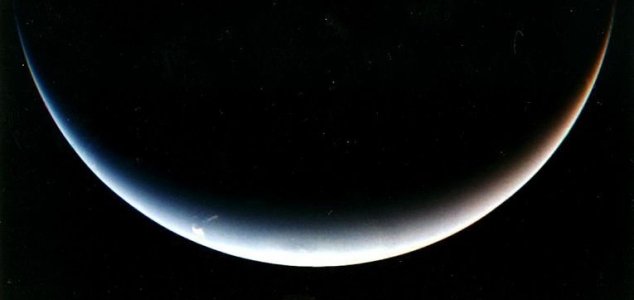Space & Astronomy
March 13, 2020 · 4 comments
4 comments

Neptune is the most distant known planet in our solar system. Image Credit: NASA/JPL
To find them, scientists analyzed data collected by the Dark Energy Survey (DES) using its 520-megapixel Dark Energy Camera at the Cerro Tololo Inter-American Observatory in Chile.
They started out with a total of 7 billion possible hits which were then repeatedly whittled down to around 400 candidate objects that could be tracked over the course of six nights.
Eventually, 319 were determined to be actual objects, of which 139 were new to science.
The pint-sized new worlds are located between 30 and 90 astronomical units (AU) away, with 1 AU being the distance from the Earth to the Sun ( 93 million miles ).
What's particularly interesting about these objects is that they could act as 'breadcrumbs' to help scientists discover the whereabouts of the enigmatic and elusive Planet Nine.
"There are lots of ideas about giant planets that used to be in the solar system and aren't there anymore, or planets that are far away and massive but too faint for us to have noticed yet," said astronomer and study co-author Gary Bernstein from the University of Pennsylvania.
"Making the catalog is the fun discovery part. Then, when you create this resource, you can compare what you did find to what somebody's theory said you should find."
Source: Space.com | Comments (4)
139 new 'minor planets' found beyond Neptune
By T.K. RandallMarch 13, 2020 ·
 4 comments
4 comments
Neptune is the most distant known planet in our solar system. Image Credit: NASA/JPL
Scientists have announced the discovery of 139 new objects situated in the far reaches of our solar system.
Neither comets nor planets, these small, distant icy bodies add to the growing index of trans-Neptunian objects classed as 'minor planets' that orbit in the outer solar system.To find them, scientists analyzed data collected by the Dark Energy Survey (DES) using its 520-megapixel Dark Energy Camera at the Cerro Tololo Inter-American Observatory in Chile.
They started out with a total of 7 billion possible hits which were then repeatedly whittled down to around 400 candidate objects that could be tracked over the course of six nights.
Eventually, 319 were determined to be actual objects, of which 139 were new to science.
What's particularly interesting about these objects is that they could act as 'breadcrumbs' to help scientists discover the whereabouts of the enigmatic and elusive Planet Nine.
"There are lots of ideas about giant planets that used to be in the solar system and aren't there anymore, or planets that are far away and massive but too faint for us to have noticed yet," said astronomer and study co-author Gary Bernstein from the University of Pennsylvania.
"Making the catalog is the fun discovery part. Then, when you create this resource, you can compare what you did find to what somebody's theory said you should find."
Source: Space.com | Comments (4)

The Unexplained Mysteries
Book of Weird News
AVAILABLE NOW
Take a walk on the weird side with this compilation of some of the weirdest stories ever to grace the pages of a newspaper.
Click here to learn more

Support us on Patreon
BONUS CONTENTFor less than the cost of a cup of coffee, you can gain access to a wide range of exclusive perks including our popular 'Lost Ghost Stories' series.
Click here to learn more
Israel, Palestine and the Middle-East
Spirituality, Religion and Beliefs
United States and the Americas
Ancient Mysteries and Alternative History
Total Posts: 7,768,146 Topics: 325,018 Members: 203,762
Not a member yet ? Click here to join - registration is free and only takes a moment!
Not a member yet ? Click here to join - registration is free and only takes a moment!



































Please Login or Register to post a comment.